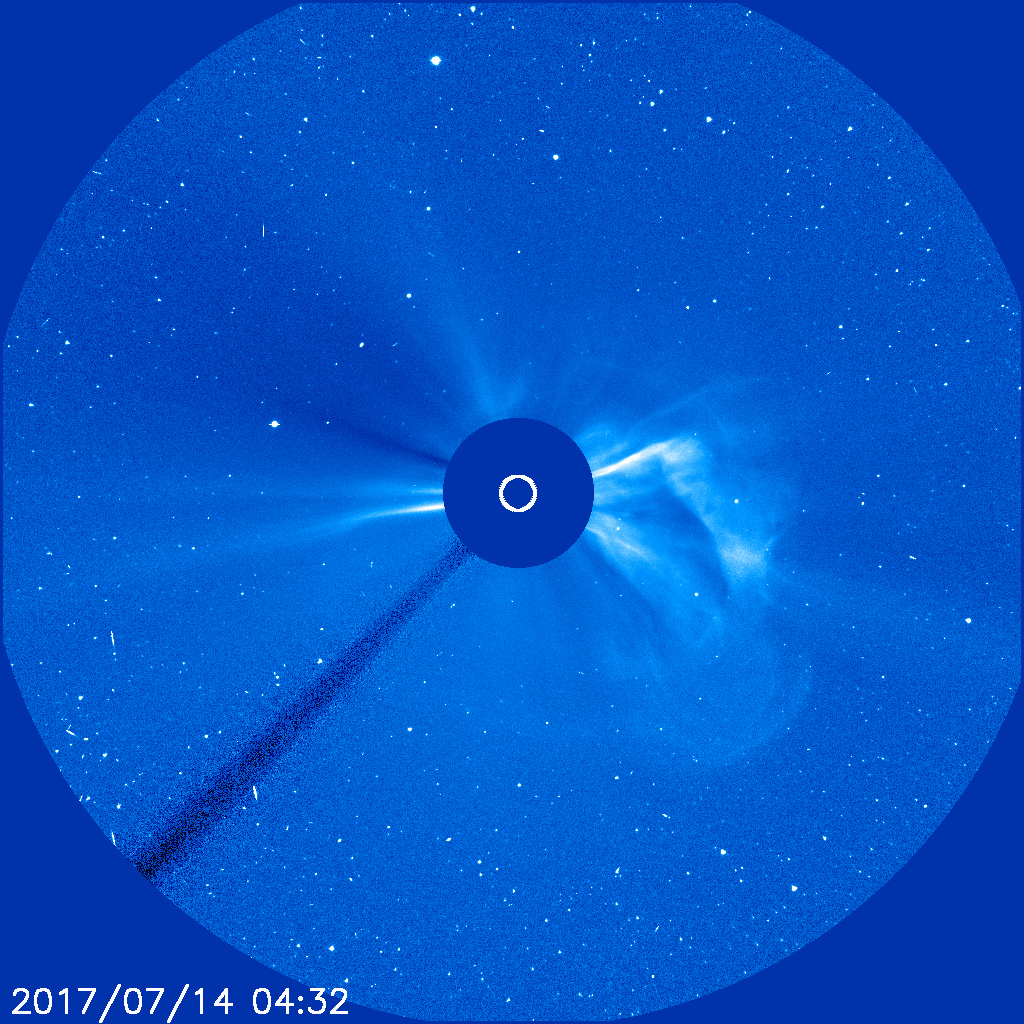Space Weather Alert - 16 July 2017
What Has Happened?
At 01:07 UT on the 14th July, the Sun produced a moderate (M-class) solar flare: a sudden release of stored magnetic energy in the Sun's atmosphere. Associated with this event was a rapid increase in the measured X-rays and energetic particles measured by satellites in Earth's orbit, which may have resulted in some deterioration in radio communications.
The flare was also associated with a partial halo Coronal Mass Ejection (CME), a fast moving cloud of gas that was seen leaving the Sun shortly after the flare. Due to the location of the flare in the western half of the solar disc, this CME is likely to give the Earth a glancing blow. When this CME reaches the Earth, it is likely to trigger a geomagnetic storm and significantly increase the chance of auroral displays. Analysis suggests that the CME will reach the Earth during the afternoon of 16 July, but the exact arrival time is not certain.
Assuming clear dark skies, and that the geomagnetic field is suitably disturbed, there is an increased chance of seeing the aurora. In the UK, those in Scotland, northern England and Northern Ireland may have the best opportunities.
Sign-up to receive Geomagnetic Disturbance Alert emails.
Follow us on Twitter:
Follow @BGSauroraAlert for more occasional aurora alerts.
Follow @BGSspaceWeather for daily space weather forecasts.
Glossary
- BGS
- The British Geological Survey is one of the Natural Environment Research Council's Research Centres.
CME or Coronal Mass Ejection- The eruption of a portion of the outer atmosphere of the Sun into space, caused by rapid changes in its magnetic field. Often occurs along with a solar flare.
- Solar Flare
- Energy released by the explosive reorganisation of magnetic fields within the Sun's atmosphere.
- High Speed Stream
- A fast moving stream of solar wind, responsible for magnetic storms.
- Magnetogram
- The variation, minute by minute, of the strength and direction of the Earth’s magnetic field. Measured in units of nano-Tesla (for the strength of the field) or in degrees (direction of the field).
Solar Wind- The ever-present expansion of the Sun’s hot outer atmosphere into the solar system, which carries space weather within it.
Sunspot- A region of intense magnetic field in the Sun's visible outer atmosphere often associated with flares and CMEs.



